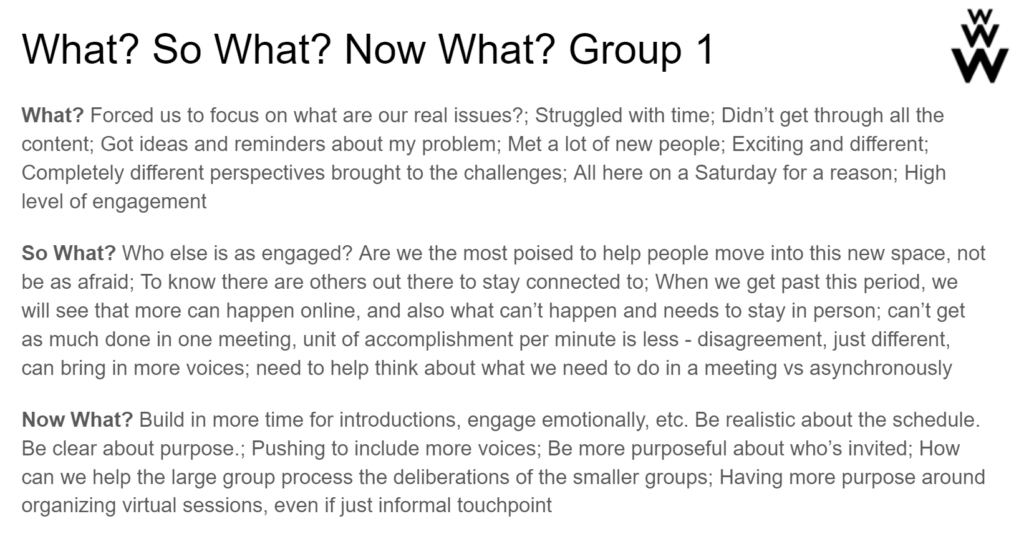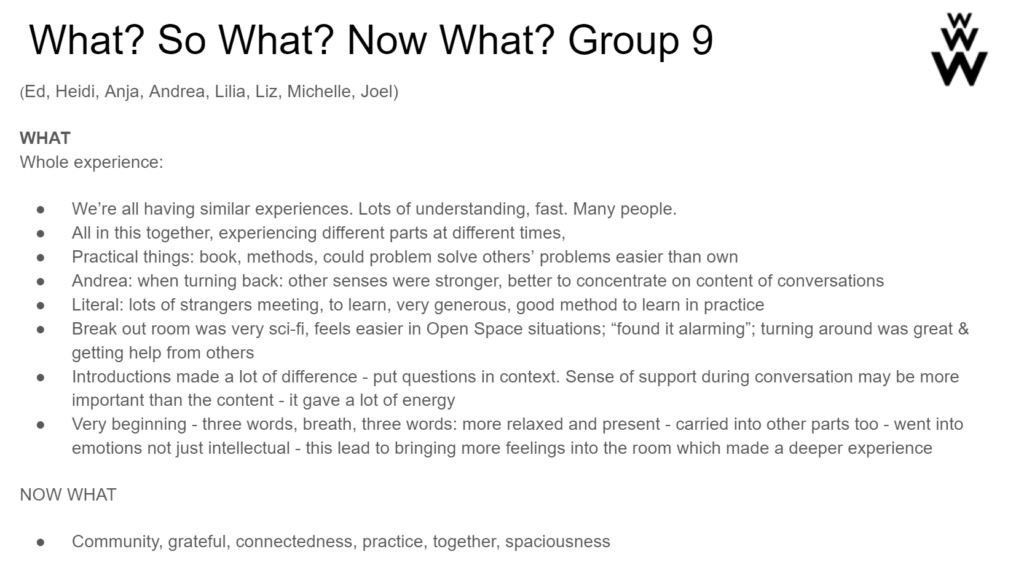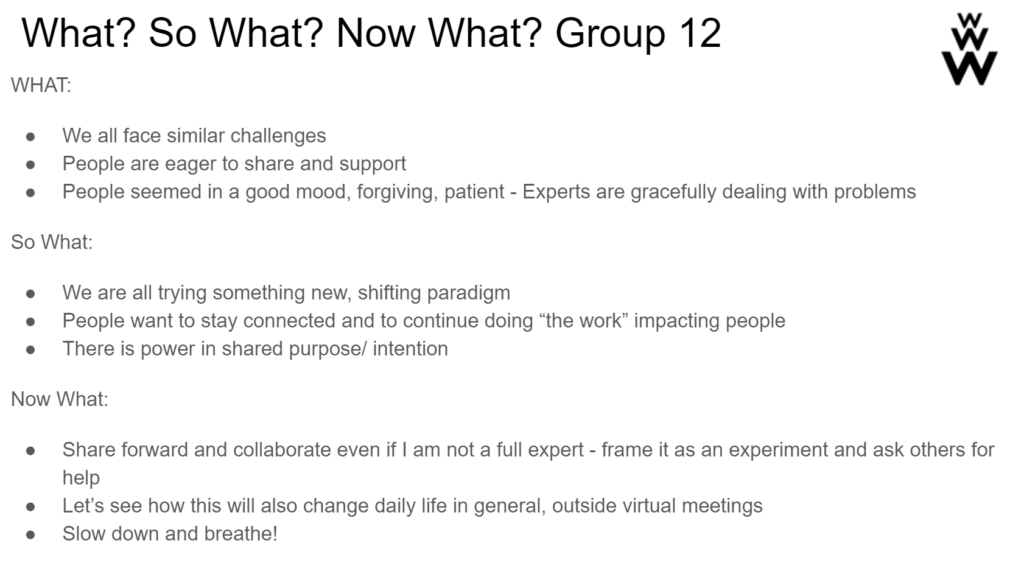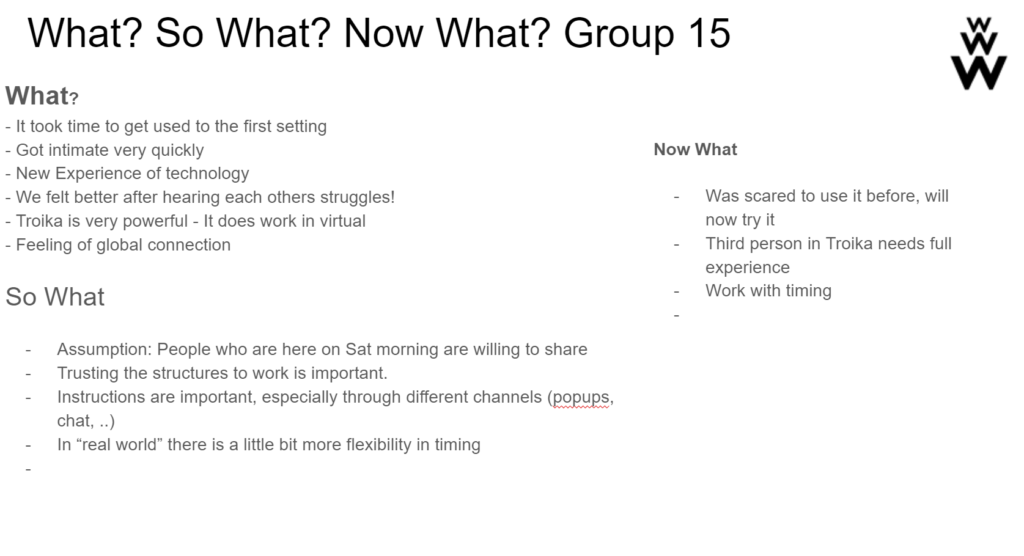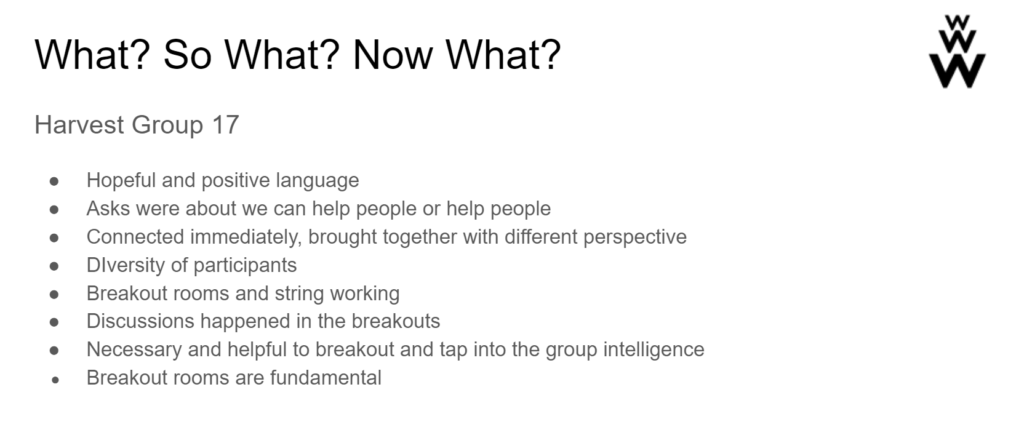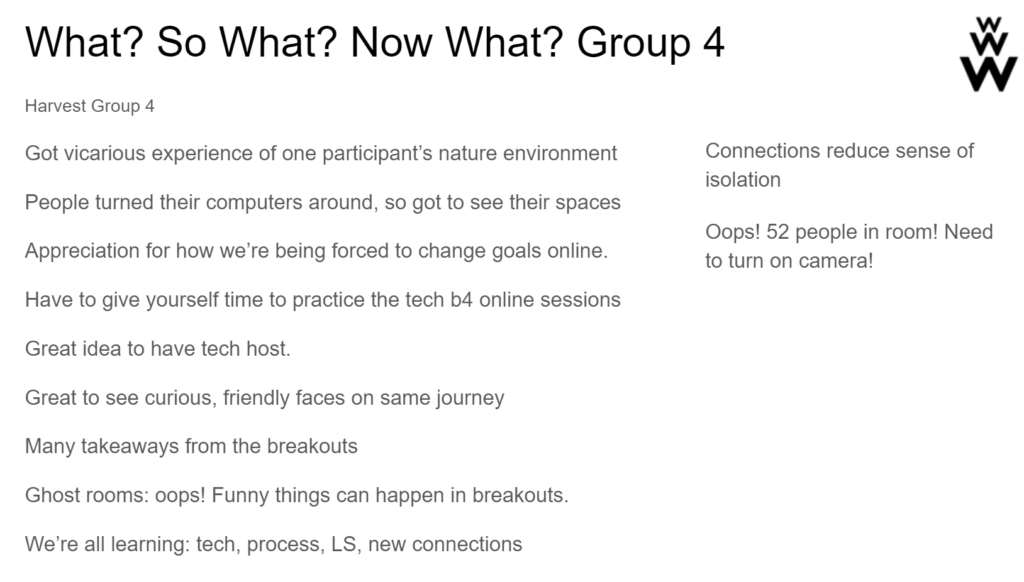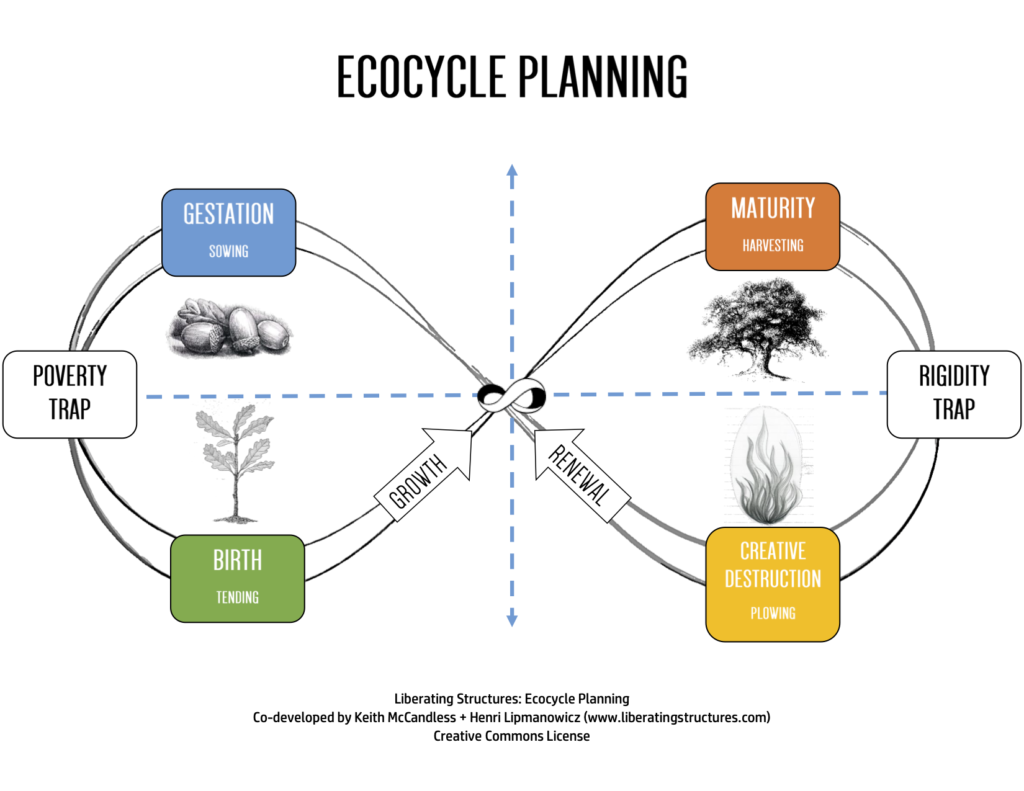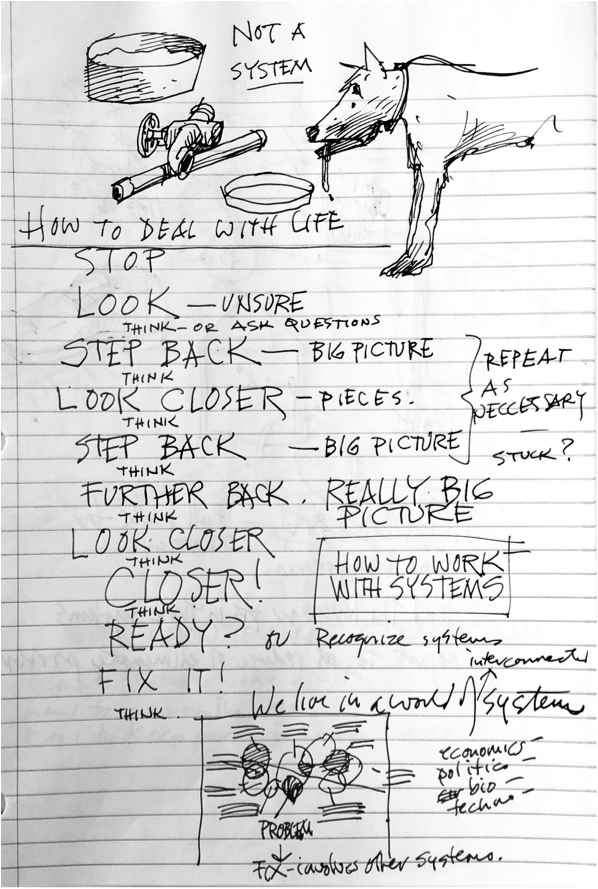I’m shortening the title… Moving Online in Pandemic is now #MOIP! This is 6th in a series of posts about the tidal wave of moving online in the time of Covid-19. #1, #2, #3, #4 and #5. Slides for the event mentioned here. And chat...
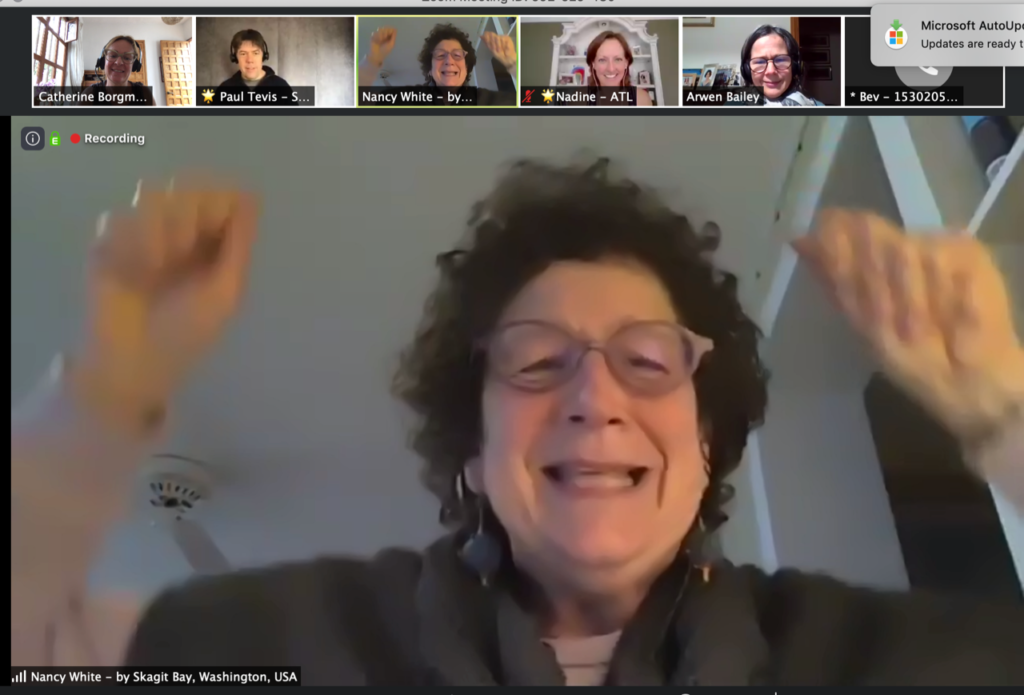
I do get enthusiastic… and then things go fast and other things fall behind. VERY SLOW. How is it that March 21 can seem so far away? How is it I started drafting this on March 31 and now it is April 13th???
Our Liberating Structures community has done so many experiments, moved the practice of using Liberating Structures online SO FAR, SO FAST, that time is playing tricks on me. I’m trying to circle back and at least share artifacts and a few reflections, if not a fuller description of what happened, what that means and what is next.
Here goes a super hurried drafty effort for our gathering 3/21/2020 to explore how to use Liberating Structures online to give and get help. The purpose of the gathering was to engage people in experiencing how even strangers can give and get help, we can do it online, and we can do it humanely. Slides and built in-created-in-the-moment harvest/notes here: https://docs.google.com/presentation/d/1SPIaIjyu2_6bf0AIU1KZJJ_eqcB9-plERZQq79CTjLk/edit?usp=sharing
The slides lay out all the process should you want to try this. The What? So What? Now What? harvest slides #19-24 are totally worth reading through. I am still trying to process it all, but if I wait for that, this blog post will NEVER get posted!
I’m going to use What? So What? Now What? as my own reflective structure. Feel free to amplify in the comments!!!
What Happened?
- We mobilized a volunteer team from the Liberating Structures community to facilitate, tech host (manage all the zoom breakout rooms), harvest key insights, and generally help people as needed. Those with Zoom experience renamed themselves with a * in front of their names so people could private message those folks for help.
- We set up a set of slides with instructions for each LS we planned to do, along with some “punctuation” in between. In LS language, punctuations are little connective tissues pieces between LSs themselves.
- We had a very large group… I think it peaked at 68 but I lost track. My sense was it was diverse – familiar folks, new folks, folks experienced with LS and some brand new, some tech familiar, some not.
- We all were getting a little frazzled with all the Zoom events, so our punctuations all focused on taking a breath, being in our bodies, even as we were connected electronically. We used “Just Three Words” to get settled and present. (For more on Just Three Words see https://fullcirc.com/2014/03/04/faciliplay-play-as-an-online-facilitation-technique/)
- To identify WHAT we wanted to get help on, we used 15% Solutions.
- I rolled out 15% pretty awkwardly and confused a number of people.
- We did Troika Consulting in breakouts of 3 people.
- We debriefed with What? So What? Now What? in groups of six people (two troikas joined up).
- People captured their WWW in the slide deck, one slide per group.
- We informally said goodbye and some stayed on for a longer, informal debrief.
- We did NOT record – we decided less recording was a little freer, more intimate.
- We DID capture the chat notes to share.
So What? What meaning to we make of it?
- No matter who shows up in your triad, there is always something of value they bring. It astonishes people, yet it is real.
- Don’t do this alone. If I had not had my friends as my team, this would have been a mess, particularly since it was a large and heterogeneous group in every sense of the word.
- Breathe. Breathe. As we paused, slowed down, we could go more deeply and thoughtfully. The stress of the initial response to moving things online in Covid19 time has amped many of us up, winding our clocks a little too tight???
- Small groups/breakouts are essential to scale large groups, creating both a broader shared experience AND deeper interpersonal connection and intimacy.
- Clear instructions, Nancy, CLEAR instructions. Will I never learn?
- WWW in small groups seemed to work well – with a little confusiasm. It needed more than 6 minutes of breakout time.
- Tech note: need to figure more graceful ways of dealing with the “two user” problem when someone is on video through their computer and audio through a phone. Zoom treats them as separate users and when you automatically do breakout rooms, they often end up in two places and the video is a “ghost.”
- Time, time, time. I wrestle with that wicked question of “how is it that time constraints make us sharper and we need more time.” (Or is it simply right now we crave more time in the smaller conversations?”
Now What? What is the next step?
- I’m working on a series of online “peer assists” for a client in the natural resources sector and I want to encourage them to do Troika Consulting. There is an inclination towards wanting consultation from wider sets of stakeholders, or focused “experts.” What happens when we resist those inclinations and simply turn to each other?
- How can people quickly find and convene Troika Consultations in these crazy days? What can function as matchmaking/matchmaker?
